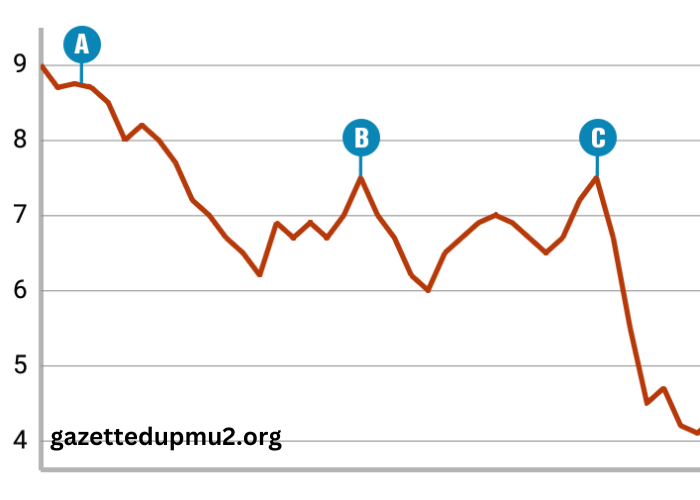The term “côtes” refers to the intricate rib patterns found in various structures and organisms, ranging from human anatomy to geological formations and architectural designs. Understanding the evolution of côtes provides insights into diverse fields such as biology, earth sciences, and engineering. This article explores the concept of côtes, tracing their development through different contexts and examining their significance in each domain.
Historical Perspective on Côtes
Historically, côtes have been observed and studied in various disciplines. In ancient times, the rib structures in human anatomy were well-documented by early physicians and anatomists. Similarly, geologists have long been fascinated by the ribbed patterns in rock formations, indicative of the Earth’s dynamic processes. The historical evolution of côtes showcases humanity’s growing understanding of natural and artificial rib structures, driven by technological advancements and scientific inquiry.
Côtes in Human Anatomy
In human anatomy, côtes refer to the rib cage, a crucial structure protecting vital organs such as the heart and lungs. The rib cage’s evolution can be traced back to early vertebrates, whose skeletal structures gradually adapted to support respiration and protect internal organs. Understanding the development and function of the rib cage has been pivotal in medical science, influencing treatments for respiratory conditions and surgical procedures.
Geological Côtes: Ribbed Rock Formations
Geological côtes, or ribbed rock formations, are prominent features in various landscapes. These structures form due to natural processes like sedimentation, erosion, and tectonic activity. Ribbed rock formations, such as those seen in desert dunes or glacial deposits, provide valuable information about the Earth’s history and the forces shaping its surface. Geologists study these formations to reconstruct past climates, geological events, and environmental changes.
Côtes in Architecture and Design
In architecture and design, côtes are often used to enhance the structural integrity and aesthetic appeal of buildings. Ribbed vaults, for instance, are a hallmark of Gothic architecture, providing both support and decoration. Modern architects continue to draw inspiration from natural rib patterns, incorporating them into innovative designs that combine functionality with visual interest. The evolution of ribbed structures in architecture reflects the interplay between form and function, driven by technological advancements and artistic vision.
Evolution of Côtes in Marine Life
Marine life exhibits a remarkable diversity of ribbed structures, from the skeletal remains of ancient marine reptiles to the shells of modern mollusks. These côtes have evolved to serve various functions, such as protection, buoyancy, and locomotion. The study of ribbed structures in marine organisms provides insights into evolutionary biology, highlighting the adaptations that have enabled species to thrive in diverse aquatic environments.
Côtes in Botany: Ribbed Plant Structures
In the plant kingdom, ribbed structures are common in leaves, stems, and seeds. These côtes play a vital role in supporting the plant’s overall structure, facilitating nutrient transport, and maximizing photosynthesis. The evolution of ribbed plant structures illustrates the complex interactions between plants and their environments, driven by natural selection and environmental pressures. Botanists study these rib patterns to understand plant physiology, adaptation, and growth.
Technological Advancements and Côtes
Technological advancements have significantly impacted the study and application of côtes across various fields. High-resolution imaging techniques, such as MRI and CT scans, have revolutionized the study of human rib cages, allowing for detailed visualization of bone structures and soft tissues. In geology, remote sensing and 3D modeling technologies have enabled more accurate mapping and analysis of ribbed rock formations. These technological tools have expanded our understanding of côtes, facilitating new discoveries and innovations.
Côtes in Art and Culture
Côtes have also found their way into art and culture, symbolizing strength, protection, and beauty. Ribbed patterns are often depicted in sculptures, paintings, and jewelry, reflecting the natural elegance and structural complexity of côtes. Artists draw inspiration from both natural and architectural ribbed structures, creating works that celebrate the interplay between form and function. The cultural significance of côtes highlights their enduring appeal and symbolic meaning across different societies.
Environmental Impact on Côtes
Environmental factors play a crucial role in shaping the evolution of côtes. Climate change, for instance, influences the formation and erosion of geological ribbed structures, altering landscapes and ecosystems. In the biological realm, environmental pressures drive the adaptation and evolution of ribbed structures in plants and animals, impacting their survival and reproduction. Understanding the environmental impact on côtes is essential for predicting future changes and developing conservation strategies.
Côtes in Paleontology
Paleontologists study fossilized ribbed structures to reconstruct the anatomy and behavior of extinct organisms. Ribbed bones and shells provide valuable information about the evolution, physiology, and ecological roles of ancient species. The study of côtes in paleontology has led to significant discoveries, such as the identification of new species and insights into the evolutionary transitions between major groups of organisms. Fossilized côtes are key to understanding the history of life on Earth.
Medical Applications of Côtes
The study of human rib structures has numerous medical applications, from diagnosing and treating rib fractures to developing surgical techniques for chest procedures. Advances in medical imaging and biomechanics have improved our ability to understand and manipulate the rib cage, leading to better outcomes for patients. Research on rib growth and development also informs treatments for congenital conditions and respiratory disorders. The medical applications of côtes demonstrate their critical role in healthcare.
Future Trends in the Study of Côtes
The future of côtes research promises exciting developments, driven by emerging technologies and interdisciplinary collaboration. Advances in genetic engineering, for example, may enable the study of rib development at the molecular level, providing insights into genetic disorders and developmental biology.
In geology, new analytical techniques may reveal previously hidden details about the formation and evolution of ribbed rock structures. The ongoing study of côtes will continue to deepen our understanding of these fascinating patterns.
Côtes in Modern Engineering
Modern engineering often incorporates ribbed designs to enhance the strength and efficiency of structures and materials. From aerospace components to automotive parts, ribbed patterns are used to reduce weight while maintaining structural integrity. Engineers draw inspiration from natural ribbed structures, applying biomimicry principles to develop innovative solutions. The evolution of ribbed designs in engineering showcases the synergy between nature and technology.
Conclusion
The study of côtes, or ribbed structures, spans multiple disciplines and contexts, reflecting their universal significance and diverse applications. From human anatomy and geology to architecture and engineering, côtes represent the intricate interplay between form, function, and evolution.
As technological advancements and interdisciplinary research continue to expand our understanding, the study of côtes will remain a dynamic and evolving field, revealing new insights into the natural and artificial world. Understanding the evolution of côtes not only deepens our knowledge of structural patterns but also inspires innovation and appreciation for the complexity of the world around us.


